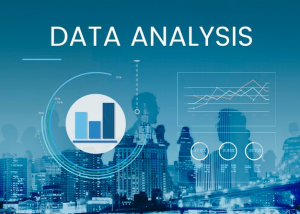Businesses are finding more and more difficulty in keeping track of every aspect of their operations because of the ever-increasing volume of generated data. When it comes to making long-term and financially rewarding decisions, organizations and businesses alike require a little assistance in the form of the best Business Intelligence software.
Different Kinds Of Business Intelligence Software

Business Intelligence software comes in various shapes and sizes, serving a specific purpose or offering a distinct set of features. It is common for the apps to read data from a data warehouse or a data mart, though this is not always the case. Following are a few BI solutions with overlapping functionalities but still managing to cater to a different set of users ultimately.
-
Business Intelligence Platforms
Business Intelligence platforms are the most frequent sort of Business Intelligence software. Data analysts and scientists use analytics platforms to perform comprehensive data analysis. Coding or data preparation skills are often required. Analysts can use these technologies to connect to databases, data warehouses, or significant data distributions and tamper with data to unearth new insights.
There are specific Business Intelligence platforms with advanced analytics features, such as predictive analytics, big data analytics, and the capacity to consume unstructured data. Platforms for Business Intelligence(BI) can include self-service features for non-technical business stakeholders, although their primary function is to use data and IT teams.
-
Self-Service Business Intelligence Software
Self-service Business Intelligence software is essential for firms that want to cultivate a data-driven culture. If you don’t have coding experience, you can use self-service Business Intelligence solutions. Those with systems frequently include drag-and-and-drop capability, prebuilt template queries, and even natural language querying when creating dashboards.
These tools, like Business Intelligence platforms, are employed to create interactive dashboards to gain helpful information. Non-data team members, such as sales reps, HR managers, marketers, and the like, may now make data-driven decisions. The user, the administrator, and the data team benefit from this.
-
Embedded Business Intelligence Software
It is possible to incorporate analytics into other business applications with the help of some technologies. Many of these suppliers also provide Business Intelligence platforms and self-service Business Intelligence tools. For the sake of selling their Business Intelligence products, they allow developers to incorporate the technology into their software.
Embedded Business Intelligence products can be used to encourage user adoption. Companies can help ensure that employees take advantage of accessible data by embedding analytics into commonly used applications. With these solutions, the typical business user may benefit from data to make better decisions.
-
Data Visualization Software
It’s possible to use data visualization software if you want to keep an eye on your company’s key performance indicators (KPIs). Users can create dashboards to keep tabs on company objectives and KPIs in real-time with these products. However, users cannot go deeper into the data with these tools.
A company’s or team’s position about crucial organizational goals and KPIs might help them focus their efforts in the right direction. Multi-team KPI dashboards are possible with these technologies, allowing each group to customize its own set of metrics. Like all other Business Intelligence software, these solutions can consume data from various sources.
-
Location Intelligence Software
Situated within business analytics is a subset known as location intelligence, which uses maps and other geographical data to deliver actionable information about a company or organization. Finding connections between things’ physical locations is made easier with the help of this software’s various features.
Data analysts can utilize location intelligence technologies to locate the optimal site for their next restaurant or warehouse in the same way that users can find trends in financial or sales data with a Business Intelligence platform. These tools can be used independently, or they can be integrated with other analytics software.
Business intelligence Software to Analyze Big Data

While data can be stored in various places, including on-premises servers or a data warehouse, businesses are increasingly turning to data analysis because of the insights it provides. Analytical systems differ in terms of complexity, but the core concept of merging huge volumes of standardized data to uncover patterns remains consistent.
-
Data mining
Grouping data, detecting outliers, and drawing linkages or dependencies between data sets are the most common correlations produced from data mining. As big data grows in size and complexity, data mining becomes an increasingly important aspect of Business Intelligence(BI). It finds patterns employed in more advanced analysis, such as predictive modeling.
-
Using Business Intelligence software for predictive analytics
Predictive and prescriptive analytics, two of the most intriguing elements in Business Intelligence(BI), are subsets of data mining. Companies can use these technologies to assist them in making better business decisions by utilizing pre-existing data sets and computational models.
As the name suggests, predictive analytics makes predictions based on current and previous data. Businesses can get a significant advantage over their competitors by using these software tools to make predictions based on linkages between different data sets.
Predictive analysis requires extensive modeling and goes beyond the boundaries of artificial intelligence (AI) and machine learning (ML) to accurately anticipate the outcomes of future events. Predictive modeling, descriptive modeling, and decision analytics are the three basic types of predictive analysis.
-
Predictive model
Predictive analytics software that focuses on a single variable is perhaps the most well-known use of this field. Correlations between units of measurement and at least one or more attributes are sought out using algorithms in predictive models. Finding a correlation between two pieces of data is the end goal.
-
Descriptive modeling
Predictive modeling looks for a single correlation between a unit and its attributes to estimate a customer’s risk of switching insurance providers. In contrast, descriptive modeling condenses data into digestible sizes and categories.
-
Analytical decision-making
Discrete decisions are taken into consideration by decision analytics. When making a decision, decision analytics considers all of the variables at play. Decision analytics, in other words, provides organizations with the information they need to make informed decisions and take action.
-
Natural language processing.
Structured, semi-structured, and unstructured data are the three main types. The most common data is unstructured, which comprises text documents and other complex items for computers to understand.
Text analytics software, often known as NLP software, scours massive amounts of unstructured data searching for patterns that could otherwise go undetected. Social media-related firms should pay attention to NLP. A company can set up criteria to track keywords or phrases, such as the company’s name, to discover patterns in how clients use that language.
In addition to gauging customer mood and providing actionable insight into lifetime customer value, natural language processing techniques can also learn customer trends and use that information to inform future product developments.
Which Business Intelligence Tool Is Best For Your Company?

Data storage and data refinement were the focus of our first two applications for Business Intelligence software. This time, we’ll look at what the software can do with the data it collects. The presentation of these findings is at the heart of Business Intelligence reporting.
-
Online analytical processing (OLAP)
Using online analytical processing (OLAP), users can query data warehouses and generate reports that take a multidimensional view of the data. The data metrics of a supply chain, for example, can comprise the location, the SKU, the date of purchase, the salesperson, and the date of expiration. Analysts can get a detailed picture of any combination of these indicators using OLAP technologies. Data analysts now can access insights buried within two or three-dimensional spreadsheets that would otherwise be unavailable.
-
Data Visualization
Business Intelligence data visualization allows firms to visually appealing data mining results or other analytics. Using visual aids like a graph or map to display data gives users access to key metrics that would otherwise be hidden in a spreadsheet. Data visualization user experience (UX) may play a significant role in the software purchasing decision due to a more substantial shift toward enhanced Business Intelligence usability.
-
Dashboards
Some corporate users don’t need full access to all dashboard features. Most workers require quick access to a few key performance indicators. Predefined visuals can be accessed at a glance with this Business Intelligence tool. Dashboards can be tailored to meet the unique demands of each firm. However, there are a few standard dashboard configurations.
- A total number of planned meetings per salesperson, KPI metrics for an unlimited number of leads and prospects in each stage of the sales funnel, revenue leaderboard, and gas gauge tool showing total revenue toward a monthly goal are all part of the sales dashboard.
- Insights about daily and monthly marketing qualified leads, top blog entries, and most recent social media posts can be found in a marketing dashboard.
- visualizations show the number of open tickets, how long it takes to close a ticket each day, and the ticket totals leaderboard
- This IT support dashboard can see critical indicators on sprint progress, open bug tickets, current on-call developers, and a scoreboard for feature requests.
Interactive dashboards are another feature of some Business Intelligence solutions, allowing business stakeholders to play with the data visualizations, zoom in for a closer look, and so on.
-
Notifications and alerts
In addition to dashboards and reports, alerts and notifications can enhance the usefulness of Business Intelligence software for non-IT users even further. If users don’t spend most of their time in the tool, alerts tell them when essential data changes.
It is possible to determine when a response or investigation is needed before an emergency arises by setting alerts for high and low-performance thresholds in the company’s systems. Setting goal-metric signs can help firms recognize their employees’ hard work early and often.
-
Embedded analytics
Embedded Business Intelligence is in high demand because it promises to make corporate analytics understandable even to non-technical workers. Allows enterprises to create and offer dynamic visualizations of their data to customers, both internally within the firm and outside.
Many thousands of person-hours and hundreds of thousands of dollars can be saved by embedding reports, dashboards, and visualizations within a company website or cloud service instead of creating them from scratch to measure business success. They now have access to plug-and-play graphics that speed up the time to market for corporate users.
Business Intelligence(BI) Software Trends
Although Business Intelligence software is rapidly evolving, these trends are now being implemented in most Business Intelligence solutions.
-
AI and machine learning
Two computer trends have impacted practically every aspect of the technology industry: artificial intelligence (AI) and machine learning (ML). Artificial Intelligence (AI) products can thrive in circumstances with a tremendous volume of data. Businesses may utilize AI and ML algorithms to learn, predict, and forecast more accurately from their existing data.
Machine learning algorithms can be trained on thousands of daily data points in cloud computing and program. Data integration between AI technologies and cloud data warehouses is frequently the next obvious step for companies that use Business Intelligence(BI).
-
Memory-based database
RAM is used instead of a disc or hard drive when reading data from an in-memory database. The application’s performance is significantly boosted by this method of retrieving data. This software has a lot riding on the future of Business Intelligence because of the increasing power of RAM in our cloud and on-premise computing settings and the need for more elegant solutions. Data analysis through multidimensional databases and cubes is becoming less and less common as memory prices continue to fall.
-
Use of Business Intelligence software in all of the company’s departments
It’s becoming increasingly common for Business Intelligence users to be non-IT staff members who wish to take advantage of cloud BI’s competitive advantages.
As a result, analytics platform features such as reporting and user-friendliness are streamlined to make them more accessible. IT professionals and business stakeholders with little analytical skills must be allowed to use the same analysis tools and data warehouse access; this is no longer acceptable.
In response to the advent of new firms that offered easy-to-use visual functions, SAP, IBM, Microsoft, and SAS all completely redesigned their interfaces. A Dresner Advisory Services report indicated that business executives, operations, and sales divisions were the primary drivers of Business Intelligence Adoption.
Need Of An Business Intelligence Software
To retrieve, analyze, and transform data into actionable business insights, firms utilize Business Intelligence software, a collection of tools that typically includes charts, graphs, and dashboards that are easy to read. Data visualization, data warehousing, interactive dashboards, and reporting tools are examples of Business Intelligence technologies.
A Business Intelligence software, as opposed to competitive intelligence, analyses data from within the company itself, allowing for a more in-depth understanding of how various aspects of the organization interact.
-
As big data
Business Intelligence software has become increasingly popular due to the growing trend of firms collecting, storing, and mining their business data. There has never been such a volume of data generated, tracked, and compiled by companies.
Another reason for utilizing data preparation tools and combining multiple data sources is that cloud software may be easily integrated with proprietary systems. But if we can’t make sense of it and apply it to better business outcomes, all this data is worthless.
-
To make statistically correct decisions.
Evidence-based decision-making is essential for businesses to make sound judgments. Purchase patterns and market trends can be found in the mountains of data generated by firms and their customers. Companies may better understand their consumers, estimate revenue growth, and protect themselves from business dangers by aggregating, standardizing, and analyzing that data.
Research And Development In The Field Of Business Intelligence
IBM and Siebel produced the first complete Business Intelligence solutions. At the same time, small teams of developers were putting out some of the products that are still in use today.
Experts and suppliers in Rome formed the Multiway Data Analysis Consortium in 1988 to improve data management and analytics for smaller and less well-funded organizations and make it more widely available to them. Many high-quality reporting systems and analysis applications were available in the United States by 2000.
Potential Issues with Business Intelligence Software
-
Need for qualified personnel
It’s not always easy to use Business Intelligence software. Administrators are often needed to help install these technologies and encourage others to use them. Such systems can be set up, but there is a shortage of competent data scientists and analysts. Data scientists will also be entrusted with extracting valuable insights from the data that they collect.
These tools aren’t nearly as successful if experts in these fields don’t use them. If you want to employ self-service Business Intelligence products, you’ll need someone to help you get them up and running. Vendor support teams or third-party consultants might be hired if a company does not have the resources to hire a full-time employee.
Data Organization — Data must be arranged to gain the most from the tool. Databases must therefore be appropriately configured and interconnected. Building a data warehouse may be necessary to consolidate several applications and databases.
Businesses may also require data preparation software to ensure that data is linked and cleaned up for the Business Intelligence solution to consume correctly. “Data quality must be at its highest for easy analysis, which frequently necessitates the involvement of a knowledgeable data analyst, IT employee, or outside consultant.
User Adoption –Forcing analytics tools on employees is difficult, especially in firms that have done things the same way for years. This is especially true if employees can get around the need. If there are alternatives to Business Intelligence software, such as spreadsheets or existing tools, employees are more likely to use them.
As a result, if managers and leaders use Business Intelligence products a must, adoption rates will rise. Businesses Substantial Data mining results must use Business Intelligence tools to achieve digital transformation, but only if their employees are on board with them.
What Business Intelligence Software Should I Choose?
Best Business Intelligence software can collect, analyze, monitor, and forecast future business scenarios by offering a comprehensive perspective of all the company’s data. Trend-spotting, self-service analytics, stunning visualizations, and professional Business Intelligence dashboards are becoming increasingly common in business.
We have tried to save your time by comparing the top features side-by-side, which can be a complex undertaking. Big data is all around us and continuously rising with each year. By adopting Business Intelligence and business analytics solutions, you stand to reap enormous dividends – your data management will become more coherent, stable, agile, and predictable with multiple capabilities that these platforms have to offer.
HazenTech’s Business Intelligence services enable the users to use the features we just discussed without the need for any special training or technical expertise. We believe in increasing corporate performance by making data analysis accessible to all employees.
We sought to help you explore the top tools on the market. We believe we have provided an exhaustive assessment of each product that will motivate you to research business intelligence tools and find an excellent fit for your organization or department.
Visit our website to know how our services can help you HazenTech









I was very pleased to find this web-site.I wanted to thanks for your time for this wonderful read!! I definitely enjoying every little bit of it and I have you bookmarked to check out new stuff you blog post.